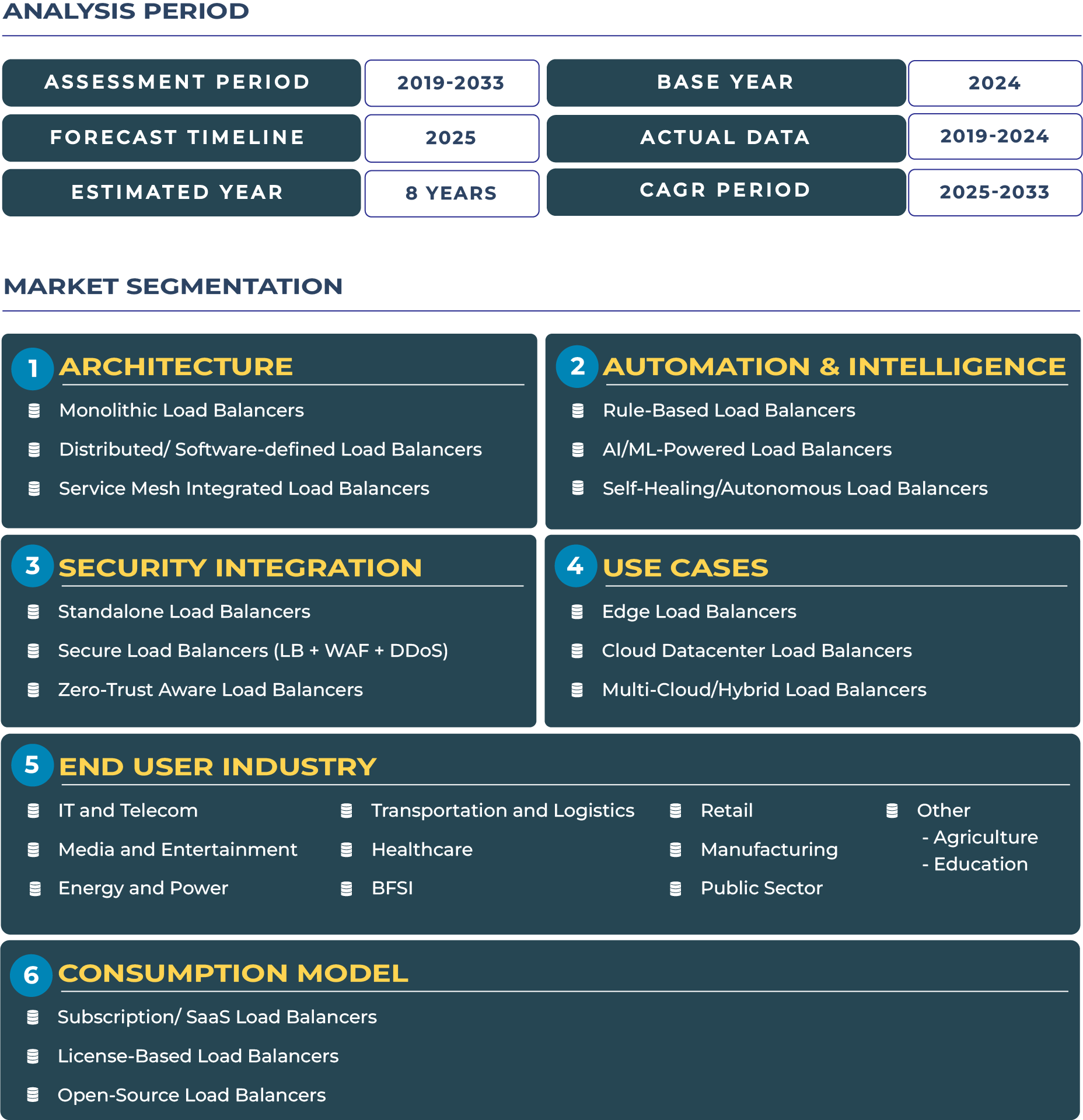Report Format:
![]()
![]() |
Pages: 160+
|
Pages: 160+
Emerging Powerhouse Coalition: BRICS Cloud Load Balancers Market Outlook
The BRICS coalition—Brazil, Russia, India, China, and South Africa—has increasingly positioned itself as a force shaping the future of sovereign and hybrid cloud ecosystems. In this dynamic environment, the cloud load balancers market is central to ensuring scalability, security, and performance for both public and private cloud infrastructures. The demand for load balancing solutions has accelerated as BRICS economies pursue digital sovereignty, strengthen cross-border connectivity, and expand digital ecosystems. According to DataCube Research, the BRICS Cloud Load Balancers Market is expected to grow from USD 790.6 million in 2025 to USD 2,907.7 million by 2033, registering a CAGR of 17.7%. This trajectory is driven by the dual push of hyperscaler expansions in China and India and digital modernization across Brazil, Russia, and South Africa. The interplay of sovereign cloud strategies and hybrid adoption across diverse industries highlights BRICS as a crucial arena for the next phase of cloud load balancers adoption.
Expanding Scale Yet Complex Challenges Driving BRICS Cloud Load Balancers Industry
Several factors are propelling the momentum of the cloud load balancers industry across BRICS nations. Collectively, the bloc represents some of the largest addressable markets in the world, accounting for nearly half of the global population. Rapid digitization is visible in India’s fintech surge, China’s cloud-native innovation, and Brazil’s e-commerce boom—all of which demand resilient and scalable traffic management solutions. Strong enterprise demand is also evident in sectors like healthcare, telecom, and banking, where distributed and service mesh-integrated load balancers are becoming mission-critical to manage application workloads.
Despite this strong growth trajectory, challenges remain. Regulatory diversity across the five nations complicates deployment, particularly with Russia’s stringent data localization mandates and South Africa’s evolving compliance frameworks. Macroeconomic volatility, including currency fluctuations in Brazil and sanctions in Russia, creates additional hurdles for consistent technology investment. Uneven hyperscaler footprints also limit availability, with some regions experiencing slower adoption due to inadequate local infrastructure. These dynamics highlight the need for localized strategies and flexible architecture models for cloud load balancer providers to succeed.
Strategic Trends and Emerging Opportunities Reshaping BRICS Cloud Load Balancers Ecosystem
The cloud load balancers ecosystem in BRICS is evolving in line with broader digital agendas. Country-specific cloud strategies, such as India’s Digital India framework and Brazil’s national cloud guidelines, are accelerating adoption of distributed and software-defined load balancers. Sovereign cloud momentum is especially strong in China and Russia, where government policies emphasize national control over critical infrastructure. Meanwhile, localized hyperscaler partnerships are expanding: in 2024, several Indian telcos partnered with global providers to deliver region-specific load balancing services optimized for local compliance.
Opportunities are equally compelling. Vendors are increasingly building country-level go-to-market (GTM) strategies, tailoring solutions to meet the regulatory and economic conditions unique to each BRICS member. Local partner ecosystems are becoming critical enablers, particularly in South Africa and Brazil, where domestic system integrators play a pivotal role in extending reach. Additionally, verticalized offerings such as financial-grade load balancers for banking or high-availability solutions for healthcare are gaining traction, reflecting the maturity of digital sectors across the bloc.
Competitive Landscape: Regional and Global Players Shaping BRICS Cloud Load Balancers Sector
The cloud load balancers sector in BRICS is marked by a blend of local champions and international players. Companies such as Alibaba Cloud continue to dominate in China, leveraging sovereign cloud policies to expand their hybrid load balancing portfolios. In India, partnerships between hyperscalers and national telcos have accelerated adoption, supported by frameworks from the Ministry of Electronics and Information Technology. Brazil and South Africa are witnessing greater traction from international vendors working closely with managed service providers to expand last-mile coverage. Key strategies include building country-specific GTMs, enhancing compliance-driven service mesh integrations, and co-developing sovereign-friendly solutions in collaboration with local regulators. By 2024, multiple new service mesh deployments were reported in India and Brazil, underscoring the competitive dynamism of the region.








